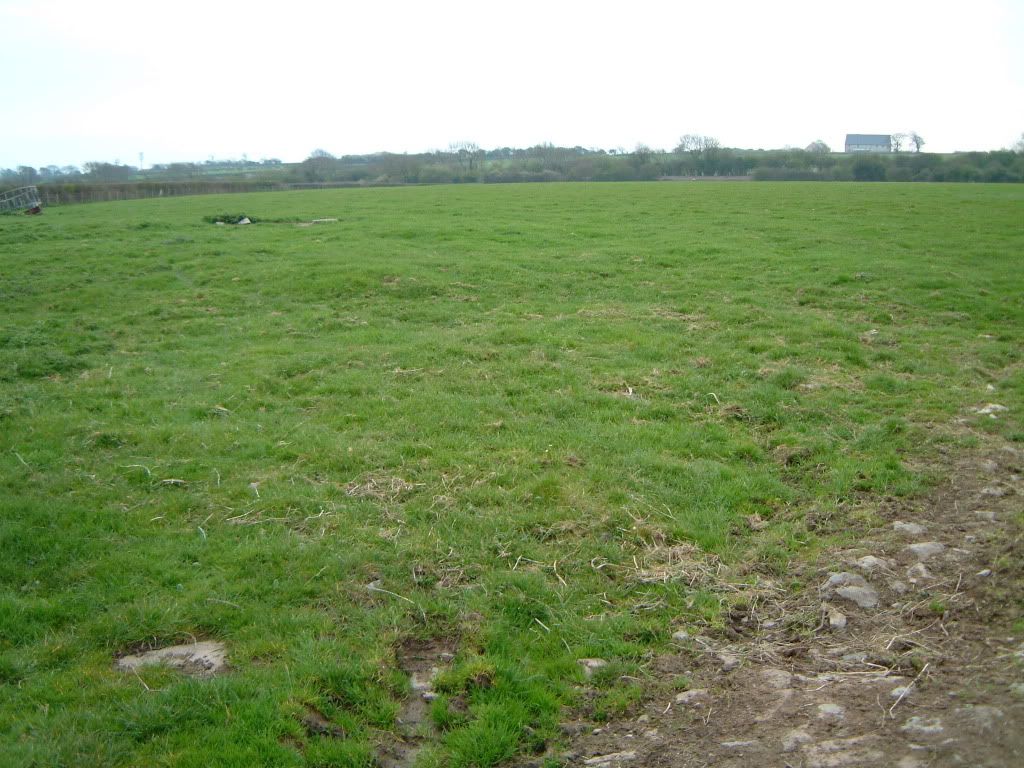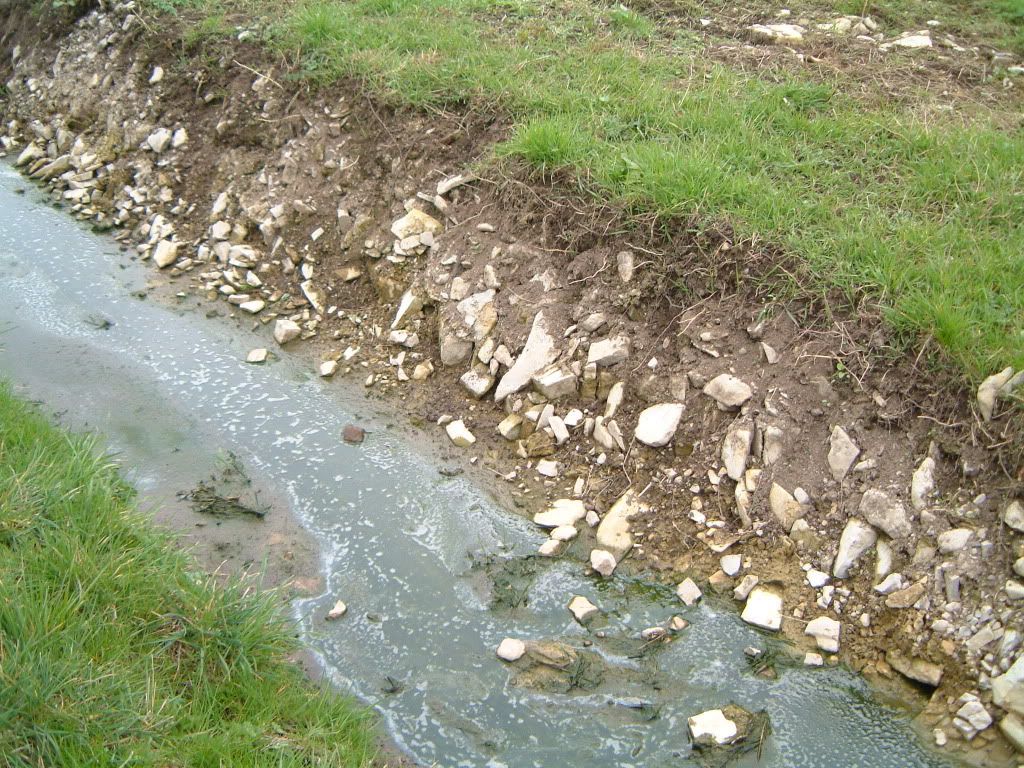The Palaces of the British Kings.
In common with other Dynasties the British Kings had a palace and mansion houses.
The great Palace of the British Kings is less than a mile north of Llanilltydfawr -now Lantwit Major on the Glamorgan
Coast.
This large palace was almost certainly destroyed in the Comet Catastrophe that devastated Britain in AD 562.
The huge walls and mounds still stick up protruding through the grass of the field covering an area of over four acres
and the perimeter walls enclose eleven acres, and everything that can be done to conceal the existence of this, the
royal palace of the ancient Khumric Kings is done.
In 1888 local people organized an excavation of this huge ruin and they quickly found a number of human remains and even
the remains of horses.
This offered clear evidence that the palace had been destroyed by the vast explosions and fires caused by the debris from
the Comet of AD 562.
The buildings cover two acres and these are set in an enclosure of eight acres.
Twenty rooms were discovered and one was 60 feet long by 51 feet wide, and the remaining walls stood nine feet high.
Another room was 39 feet long by 27 feet wide and this had rich mosaics on the floors and plastered walls with painted
murals on the walls.
There were 43 human skeletons in this room, and the bones of three horses.
The site was then reburied and covered over with turf.
Local records are that the excavation was stopped by the arrival of "men in suits", which in Welsh terms meant foreign
English officials from London.
Clearly there was no wish to exhibit the Palace of the British Kings in Wales with German Hanoverians masquerading as
Princes of Wales - instead of Wales being correctly a Kingdom.
A small partial excavation in 1938 uncovered another six skeletons in the lower stonework of one of the walls, where
people might have sought shelter.
This excavation was also stopped.
This is a hugely important British site and a place of international importance and significance.
Radio Carbon 14 testing of the human bones shows a date of around AD 562 for the destruction of this great palace.
As King Arthur II was the King of Glamorgan, and certainly the Teyrn or Monarch of Britain, at that time this great
ruined palace is the most likely site for the legendary Camelot.
The field is known as Caer Meade, and whether Caer Meade was 'Camelot' is a possibility.
The meaning of Meade is not clear but it may mean "a buffeting" or a "bashing", and certainly the 562 comet did that.
The private residence of the Glamorgan Kings was at Caer Melyn, also known as Cu Bwrd 'Mutually Together Table in North
Cardiff is another putative 'Camelot'.
This castle was still there in 1453 when a wedding was recorded as being held there.
Today the ruins lie under Castle Field.
Either way, the idea of a great Palace of King Arthur existing is proven and just how long the authorities can keep
the lid of silence this site remains to be seen.
 The Google Earth location is at - 51* 26' 09 03 N, and 03 29' 55 63 W.
The Google Earth location is at - 51* 26' 09 03 N, and 03 29' 55 63 W.

This ditch together with surrounding fields mark all that remains of Camelot except whats still buried beneath the surface. This is the greatest Archaeological find in Britain today because it contains a wealth of hidden gold and valuable objects from the so called Dark Age that only came about as a result of the comet stike in AD 562. This was confirmed by Professor Clubes of Cardiff University too, in making this public he outlawed himself from his academic colleagues for speaking out too.
If the Internet has existed a century ago and communications between citizens were allowed then this would not need
to be written.
This Lantwit Major palace dwarfs the excavated palace of King Cogidubnus at Fishbourne in South East England who is
listed as an arrant traitor to Britain in the Khumric records.
Llan-illtyd-fawr means "holy estate-of Illtyd -great", and Lantwit Major is meaningless, and according to the foreign
Anglo-Saxon interpretations of our accurate British History this palace should not exist.
The early propaganda was that the great palace was destroyed in AD 293 when the Emperor and King Carawn-Carausius was
killed.
This is plainly untrue and another deliberate diversion to get the site away from any connection with the two Kings
who were named as Arthur I of around AD 345to 400, and Arthur II born in AD 503 and died in 579.
Palace and Residence locations of the Ancient British Kings.
One Camelot site is at Caer Melyn - The Yellow Fort at Castle Field.
51 26 09 03 N
3 29 55 63 W.
Caer Meade Palace at Lantwit Major.
St Iltyd's Church at Llantwit Major.
Summer Residence at Din Dryfan - (Dunraven) - castle of the birth. (Tin Tryfan).
CLICK
HERE TO RETURN TO MAIN INDEX
Send an e-mail to hassell1@hotmail.com


